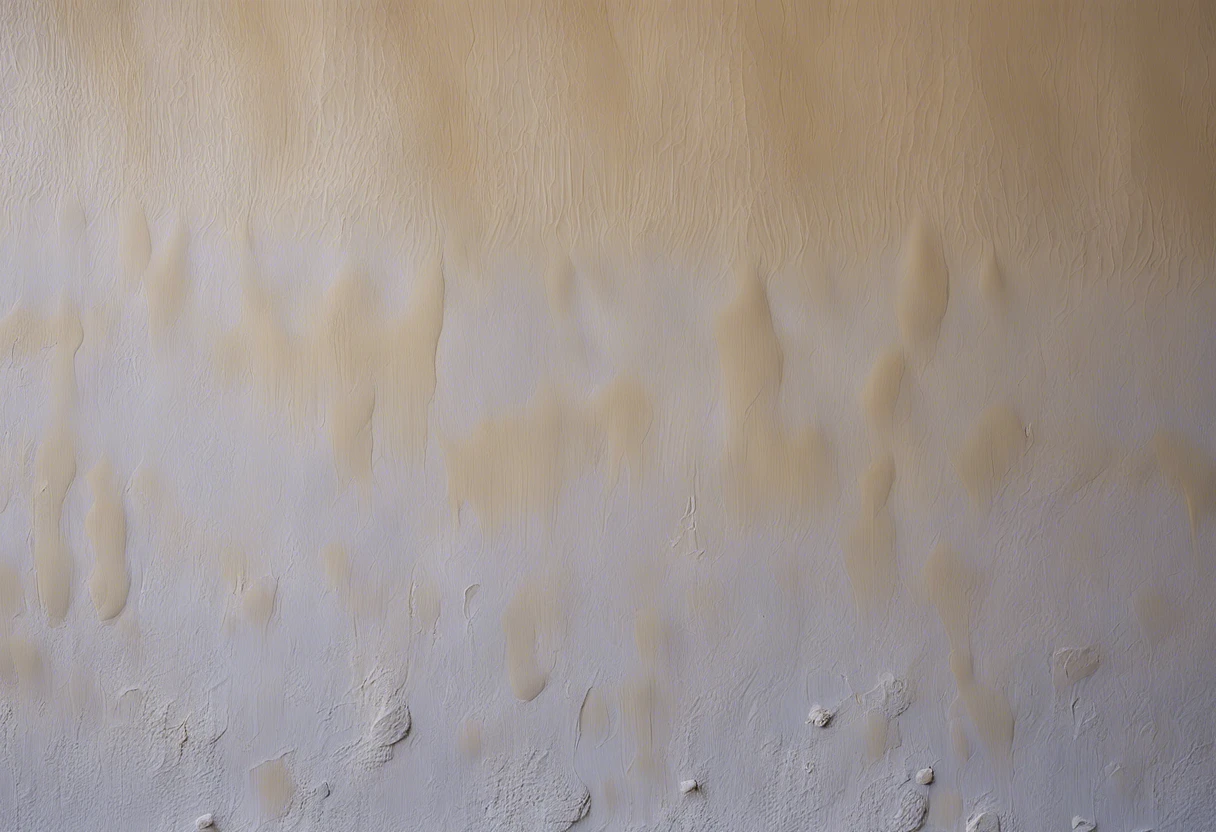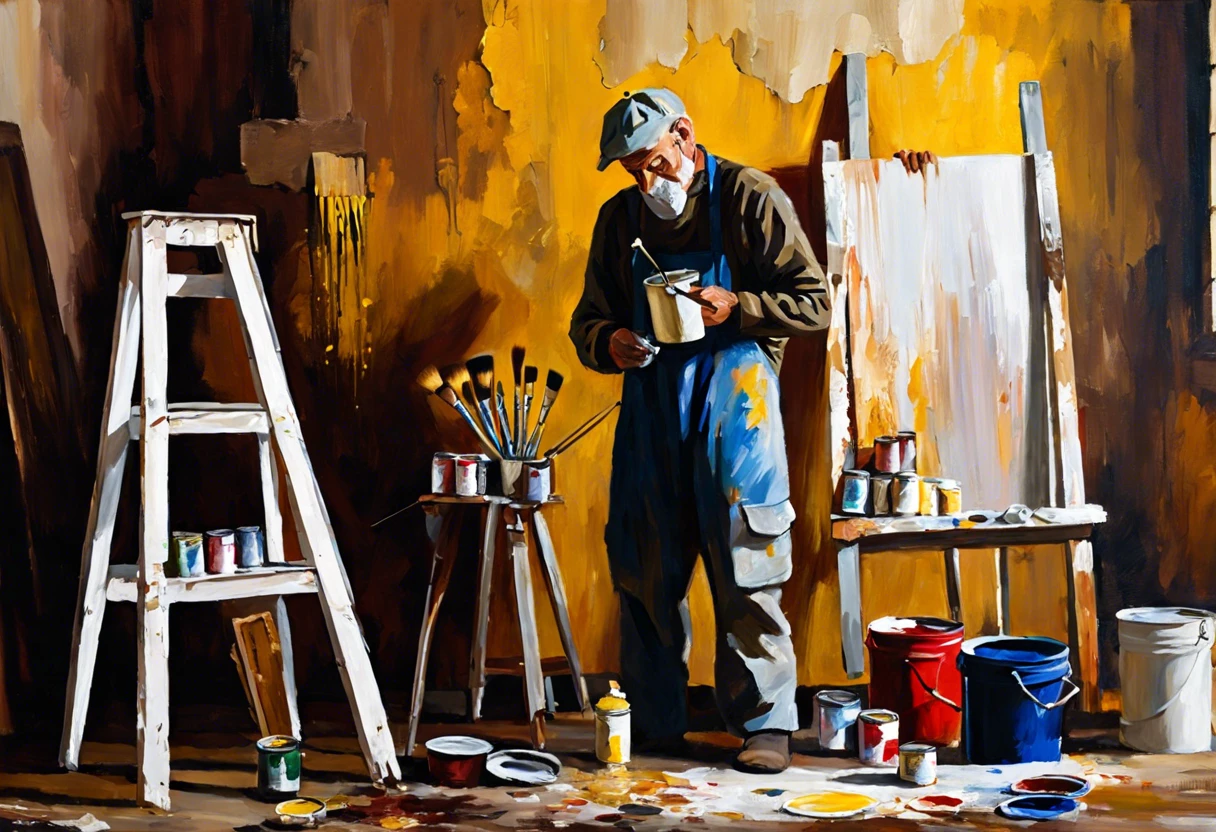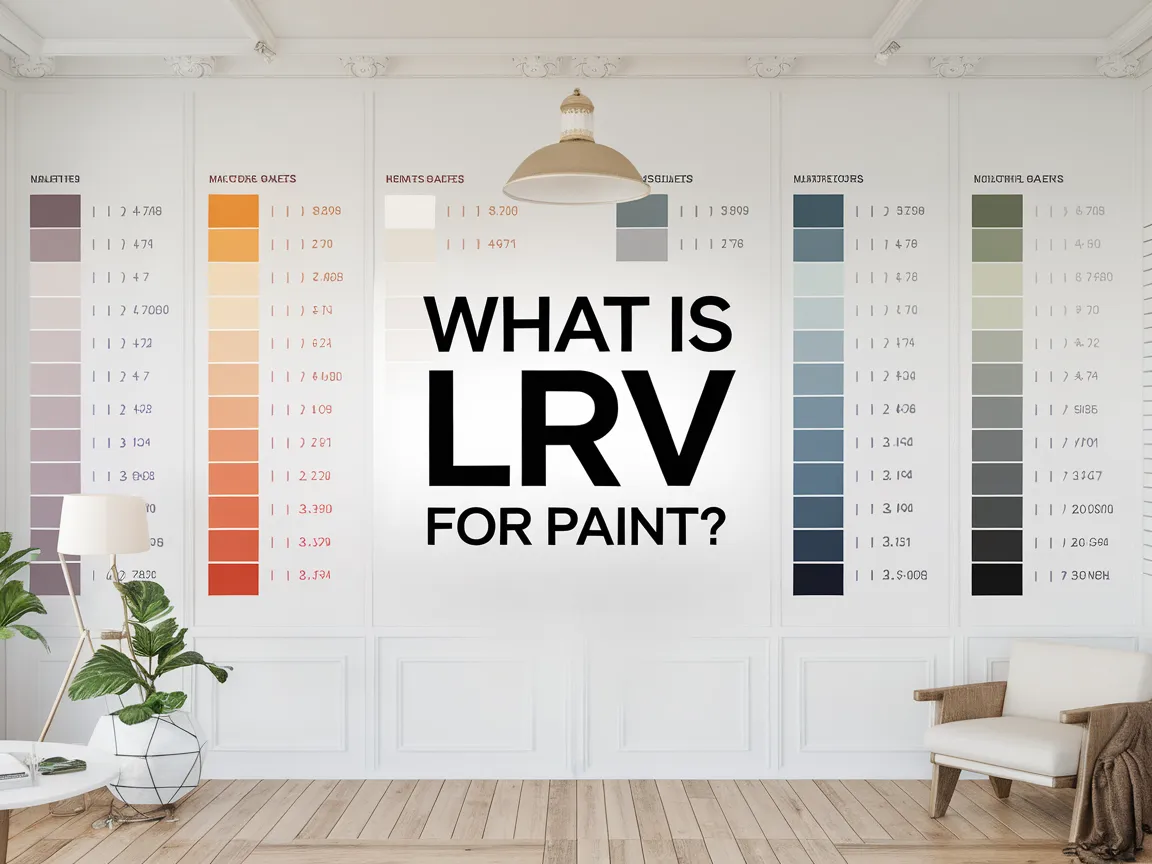Can You Wait Too Long to Paint After Priming?
Published on: October 6, 2025 | Last Updated: October 19, 2025
Written By: Alisha Winters
Priming is like putting on a special coat before the real painting starts. It helps the paint stick and makes colors pop, just like wearing a clean shirt before going out!
When you think about priming techniques and best practices, remember it’s key to follow the rules. I once primed a wall and waited too long; the final paint didn’t stick well, making my work look messy.
In this article, we’ll explore essential steps before painting, a step-by-step guide for painting after priming, types of primers and their effects, and common issues that can pop up. You’ll get all the details on how long after priming can you paint and what can go wrong if you wait too long!
Contents
- 1 Can You Wait Too Long to Paint After Priming?
- 2 What is Priming in Painting?
- 3 Essential Steps to Take Before You Start Painting
- 4 Step-by-step Guide to Painting After Priming
- 5 Types Of Primers and Their Impact on Waiting Time
- 6 Factors Affecting the Timing Of Painting After Priming
- 7 Optimal Timing: When to Paint After Priming
- 8 Best Practices for Waiting Periods
- 9 The Impact of Surfaces on Painting Timing
- 10 Common Issues Related to Delaying Painting After Priming
- 11 Signs You’ve Waited Too Long
- 12 Recommended Actions if You’ve Waited Too Long
- 13 Primer Drying Time: Quick Reference Table
- 14 Finishing Touches: What to Do After Painting
- 15 Frequently Asked Questions About Painting After Priming
- 16 Conclusion: Best Practices for Painting After Priming
- 17 Additional Resources
Can You Wait Too Long to Paint After Priming?
Yes, you can wait too long to paint after priming. Ideally, paint within 24 hours for the best results. If you wait over a week, the primer may not bond well, risking peeling or bubbling paint later. When working with specialized surfaces like polycarbonate panels, you’ll want to ensure proper painting techniques for plastic surfaces. Always check the primer’s instructions!
The Finishing Touch
A freshly painted wall is a blank canvas. The best way to bring your room to life is with a single piece of statement art that ties everything together.
Browse Wall Art at Big Wall DecorWhat is Priming in Painting?
Priming is a preparatory step in painting. It involves applying a coat of primer, usually water-based or oil-based, to improve paint adhesion and durability. A good primer dries to the touch in about 30 minutes to 1 hour, while full curing can take up to 24 hours at room temperature (20-25°C or 68-77°F). If you’re considering painting a challenging surface like a bathtub surround, you’ll want to ensure proper priming techniques for specialized surfaces.
If you’re wondering how long to wait before painting after priming, here’s a quick tip. I once let primer sit for over a week before painting, which affected the final finish!
This experience showed me the importance of timing. Ideally, you should paint within 24 hours after applying the primer to ensure optimal adhesion. With paint, timing is crucial—how soon you paint after priming really matters for achieving the best results! If you’re looking to apply these techniques to a specific project like a bookcase, I recommend checking out some professional painting techniques for furniture.
Essential Steps to Take Before You Start Painting
What do you need to prepare for?
- High-Quality Primer: Use a primer like Zinsser B-I-N or KILZ Original. This ensures a strong base for better paint adhesion and durability.
- Sandpaper: Get 220-grit sandpaper such as Norton or 3M. It’s crucial for smoothing surfaces, ensuring the paint applies evenly.
- Masking Tape: Choose a brand like FrogTape or ScotchBlue. This protects edges and prevents paint from bleeding, keeping your lines sharp.
- Paintbrushes and Rollers: Use quality tools like Purdy or Wooster. Proper tools can significantly affect the finish and texture.
- Drop Cloths: Use products like Canvas Drop Cloths; they protect your floors and furniture while you work.
So far we covered essential preparations for painting. Let’s look at the step-by-step process for painting after priming.
Also See: How to Clean a Palette Of Oil Paint? Easy Steps!
The Finishing Touch
A freshly painted wall is a blank canvas. The best way to bring your room to life is with a single piece of statement art that ties everything together.
Browse Wall Art at Big Wall Decor
Step-by-step Guide to Painting After Priming
Now, let’s cover the steps for painting after priming. Stick with me to nail each detail!
-
Evaluate Primer Drying Time
Check the manufacturer’s instructions for drying times. Typically, sandable primers take about 30 minutes to 1 hour to become touch dry, but allow at least 24 hours before painting for full adhesion. If you’re working on a specific project like painting a bluebird house, proper primer preparation is crucial.
I’ve noticed a difference in finish when I waited too long after priming, causing some fabrics to absorb water. Stick close to the recommended drying time to avoid painting issues later.
-
Assess Weather Conditions
Monitor the temperature and humidity levels in your workspace. Ideally, work in temperatures between 10°C and 35°C (50°F and 95°F) with humidity below 70% to ensure your paint adheres well and dries quickly. If you’re looking to expand your painting projects, you might want to explore painting clay flower pots with precision.
I learned the hard way that muggy conditions make paint take much longer to cure. Keep it cozy for quicker results!
-
Look for Signs Of Primer Wear
Inspect your primed surface for dust accumulation or peeling edges. If you notice any wear after a few days, freshen up the area by lightly sanding and reapplying primer.
Once, I skipped this step, and my paint job didn’t stick properly. Taking the time to check saves you from a total redo!
-
Check With Water Test
Perform a quick water test to gauge bond strength. Dab a wet cloth against the primed surface; if the paint starts to lift or saturate, it’s too soon to paint!
This little trick has saved me from mistakes! It’s a quick check that gives you confidence before making the final touches.
-
Initiate Top Coat Before It’s Too Late
Once you’re sure the time is right, schedule to add the top coat within 1 to 4 weeks of priming, depending on your primer type. Waiting longer than a month could lead to adhesion issues.
I once exceeded this timeframe and faced holograms in my finish! So, let’s avoid that, okay?
We’ve wrapped up the step-by-step process for painting post-priming here. Let us turn our attention to primer types and how they affect waiting times.
Types Of Primers and Their Impact on Waiting Time
Let’s explore the different types of primers: Latex, Oil-based, Shellac, and Epoxy.
-
Latex Primer
Latex primers are water-based, making them easy to clean. You can generally paint within 1-2 hours after applying. However, waiting too long can affect adhesion.
-
Oil-based Primer
Oil-based primers take about 24 hours to dry. If you wait too long, you risk a less durable paint job, so timing is crucial.
-
Shellac Primer
Shellac primers dry quickly, usually in about 30 minutes. However, they can flake if paint is applied too late, compromising the finish.
-
Epoxy Primer
Epoxy primers are highly durable and primarily used for metal. You can paint over them in about 6-8 hours. Waiting too long may compromise their performance.
From my experience, I prefer latex primers. They’re user-friendly and dry quickly, allowing me to paint without worries.
We covered the different types of primers and their effects on drying time. We will now cover the factors influencing painting timing.
Factors Affecting the Timing Of Painting After Priming
What factors influence how long you can wait to paint after priming?
-
Humidity Levels: High humidity can prolong drying times, delaying when to paint.
-
Temperature: Cooler temperatures slow primer drying, increasing your wait time.
-
Primer Type: Different primers (Oil-based Vs. Water-based) dry at different rates. Know your choice!
-
Surface Material: Porous surfaces like wood absorb moisture, affecting how long the primer remains effective.
So far we covered the elements that influence when to paint after priming. Let’s look at ideal timing for painting next.

Optimal Timing: When to Paint After Priming
Let’s dive into why timing matters so much when it comes to painting after priming.
| Trigger | Recommended Waiting Time | Potential Issues When Delayed |
|---|---|---|
| Latex Primer | 1-2 Hours | Poor adhesion, rolling may cause lifting |
| Oil-based Primer | 24 Hours | Peeling or bubbling |
| Shellac Primer | 30 Minutes – 24 Hours | Flaking or surface imperfections |
| Epoxy Primer | 6-8 Hours | Reduced durability, soft finish |
Best Practices for Waiting Periods
Here’s a quick rundown on how to handle the waiting game after priming.
- Monitor Temperature: Paint when it’s between 10°C and 35°C (50°F and 95°F) for the best results!
- Check Humidity: Aim for humidity below 70%. High moisture can prolong drying times.
- Inspect Regularly: Look for any signs of wear or dust. A quick clean-up can prevent future problems.
- Follow Manufacturer Directions: Always stick to the guidelines on the primer can for the best outcomes.
The Impact of Surfaces on Painting Timing
Did you know the surface type plays a crucial role in how fast you can paint?
- Plywood: Absorbs moisture, requiring longer drying periods.
- Drywall: Dries faster but still needs around 1-2 hours before painting.
- Metal: Epoxy primers are perfect but require a careful waiting period of 6-8 hours.
- Concrete: Needs at least 24 hours before applying the top coat to ensure it’s fully dried.
The Finishing Touch
A freshly painted wall is a blank canvas. The best way to bring your room to life is with a single piece of statement art that ties everything together.
Browse Wall Art at Big Wall DecorCommon Issues Related to Delaying Painting After Priming
My friend waited a week to paint after priming. Unfortunately, the primer lifted in spots. That’s a rookie mistake! Experts say you shouldn’t wait more than 30 days (About 0.9 Months). After that, re-priming may be necessary. If you’re wondering about the nuances of paint application, creating perfect paint conditions requires careful timing and technique.
To fix this, scrape off the lifted areas, sand lightly, and apply a new layer of primer. Keep humidity below 70% for best results!
Signs You’ve Waited Too Long
Sometimes, waiting too long to paint shows tell-tale signs. Here’s what to look for:
- Tacky Surface: If the primer feels sticky, that’s a red flag! It indicates the drying process is incomplete.
- Dust Accumulation: A layer of dust on the primed surface means it’s been too long. Dust can hinder paint adhesion.
- Peeled Edges: If the primer starts to peel away, it’s a clear sign you’ve waited beyond the ideal time frame.
- Color Variation: If the color of the primer has faded significantly, painting might yield patchy results.
Recommended Actions if You’ve Waited Too Long
What can you do if you’ve waited too long after priming? Here are steps to save your project:
- Sand the Surface: Lightly sand the primer to create a fresh texture for the paint to grip.
- Clean Well: Use a tack cloth to eliminate dust and debris. A clean surface is essential for good adhesion.
- Reapply Primer: If the original primer is compromised, consider applying a thin new layer before painting.
- Wait for Proper Curing: Always let any new primer dry according to its instructions before painting.
Primer Drying Time: Quick Reference Table
| Primer Type | Touch Dry Time | Optimal Painting Time | Signs of Overwaiting |
|---|---|---|---|
| Latex Primer | 1-2 Hours | Within 24 Hours | Tacky surface, dust accumulation |
| Oil-based Primer | 12-24 Hours | Within 14 Days | Peeled edges, color fading |
| Shellac Primer | 30 Minutes | Within 24 Hours | Dull finish, tackiness |
| Epoxy Primer | 6-8 Hours | Within 10 Days | Surface imperfections, color change |
Finishing Touches: What to Do After Painting
After planning your timeline for painting over primed surfaces, always let the primer cure for 24 hours at 20°C (68°F). Not following this rule could affect paint adhesion.
Inspect seams, bubbles, and drips closely—use a magnifying glass for accuracy. A smooth finish requires a moisture meter; ensure the moisture content is below 15%. Consider using a Zinsser product for assurance.
From one expert to another, get a tack cloth to remove dust before painting; fine dust can impact finish quality. Mix paints within a temperature range of 18–24°C (64–75°F) for the best results. When preparing surfaces, you might want to explore advanced paint surface preparation techniques.
Also See: How to Clean a Painting Brush? Quick Tips for Care
Frequently Asked Questions About Painting After Priming
Can I Wait a Few Days to Paint After Priming?
Yes, you can wait a few days to paint after priming. However, the ideal timeframe is within 24 hours for best adhesion and durability.
How Can I Tell if the Primer is Still Good to Paint on?
You can tell if the primer is still good to paint on by checking its dryness. If the primer is dry to the touch and doesn’t feel tacky, it’s good to go!
Does Temperature Affect the Waiting Time for Painting After Priming?
Yes, temperature definitely affects the waiting time for painting after priming. Warmer temperatures, around 15°C to 30°C (59°F to 86°F), can reduce drying times while colder conditions can slow it down drastically. If you’re unsure about painting techniques, painting over different colors requires specific considerations.
Is It Necessary to Sand the Primer Before Painting?
Yes, it’s often necessary to sand the primer before painting. Sanding helps to create a smoother surface, allowing the paint to adhere better for about 30% stronger bonding.
How Soon After Priming Can You Paint?
You can paint as soon as the primer is dry to the touch, typically within 1 to 4 hours. However, for maximum adhesion, aim for no later than 24 hours after priming.
Conclusion: Best Practices for Painting After Priming
Thank you for staying with us! We explored essential painting techniques and tips covering the definition of priming, crucial pre-painting steps, a detailed painting guide, color palette suggestions, primer types and their effects, timing considerations, common delays, finishing touches, and exciting DIY project ideas.
So, can you wait too long to paint after priming? The answer is yes. Delaying can result in poor adhesion or uneven surfaces. To mitigate these risks, aim to paint within 30 days for water-based primers and 14 days for oil-based primers. Feel free to reach out for further advice on timing and painting techniques.
For additional resources and detailed guides, visit Paint Answers.
Additional Resources
- r/minipainting on Reddit: What’s the shortest time I can wait after spray priming to paint?
- r/minipainting on Reddit: How long can you wait before painting after priming?
- Min/Max time between prime & paint?
Experienced interior designer with 15+ years in transforming spaces, blending artistry with expertise in color and design. Rhode Island School of Design graduate, specializing in restorations and modern makeovers.
Priming, Topics









